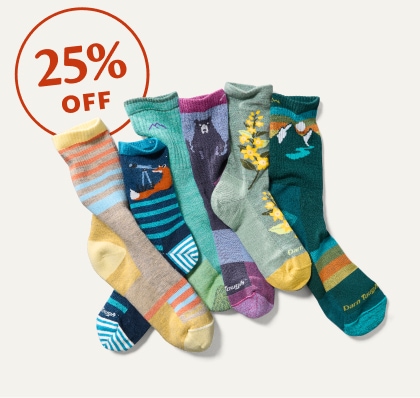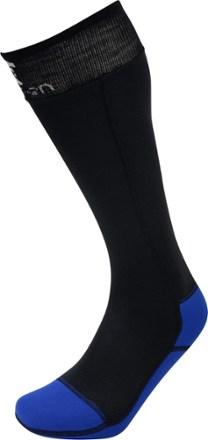Polartec Power Stretch Women's Socks
(1 product)- Lorpen (1)
- Deals (1)
- Quick Drying (1)
- Moisture Wicking (1)
- Bluetooth (3)
- COOLMAX (30)
- Indestructawool (50)
- Polartec (1)
- Polartec Power Stretch (1)
- Thermolite (3)
- Snowsports (1)
- Black (1)
- Regular (1)
- Unisex (1)
- $20.00 to $49.99 (1)
- Small (1)
- Regular (1)
- Light Cushioning (1)
- Knee-high (1)
- LorpenT3+ Polartec Superlight Race Ski Over the Calf Socks$22.73Save 62%compared to $60.00Members use code LABORDAY2025 for an extra 20% off at REI Outlet(0)0 reviewsREI OUTLET

Related Expert Advice articles
How to Choose Hiking Socks
Select your sock height
- No-show: Little protection against skin-to-boot abrasion. Best with low-cut footwear like trail-running or light hiking shoes
- Ankle: Covers your ankle bone and offers some protection. Best for low- to mid-cut shoes and boots
- Crew: Extends a few inches above ankle bone and protects against boot abrasion. Good for boots or shoes
- Knee-high: Typically used for mountaineering, provide warmth and protection against high-cut boots
Choose your preferred cushioning level
- None: Ultralight, breathable socks designed for use in hot weather or as sock liners
- Light: Moisture-wicking and comfortable at the heel and ball of your foot; relatively thin and better for warm conditions
- Medium: Targeted cushion in the heel and ball of the foot for hiking and backpacking; warm enough for moderate to cold conditions
- Heavy: Thickest and most cushioned; best for long trips, tough terrain and cold
Select a fabric
- Choose a moisture-wicking and quick-drying material like wool, polyester or nylon.
- Spandex is often added for its elastic properties to prevent bunching or wrinkling.
- Cotton isn't recommended as it absorbs moisture, takes longer to dry and cools down quickly.
Find your fit
- Choose based on your foot size, not shoe size.
- If you're between sizes, size down to avoid excess material that can bunch up and cause blisters.
- Socks should feel snug but not tight, and the sock's heel cup should naturally line up with your heel.
Choose a fabric type
Wool retains warmth when wet and is naturally odor resistant. It breathes more easily and wicks moisture from your feet.
Synthetic blends like nylon, polyester or acrylic are ideal for those with sensitive skin or are allergic to wool. These fabrics trap warmth and wick moisture.
How much cushioning do you want?
No cushioning: Works well with performance boots that have a tighter fit or for those who want to feel the terrain underfoot.
Light cushioning: Typically padded at the shins with minimal or no cushioning on the balls of the feet; reinforced toes and heel are common.
Medium cushioning feature added padding for warmth and to absorb impact. Ideal for cold conditions or snowboarders with loose fitting boots.
Heavy cushioning: Great for extreme winter environments or low-intensity winter activities like ice fishing or riding a snowmobile.
Length
Most socks for skiing and snowboarding go up to the knees to help protect from shin bang. Cross-country skiers and snowshoers may want shorter length socks.
Read full article: The 8 Best Hiking Socks of 2025: Staff Picks
